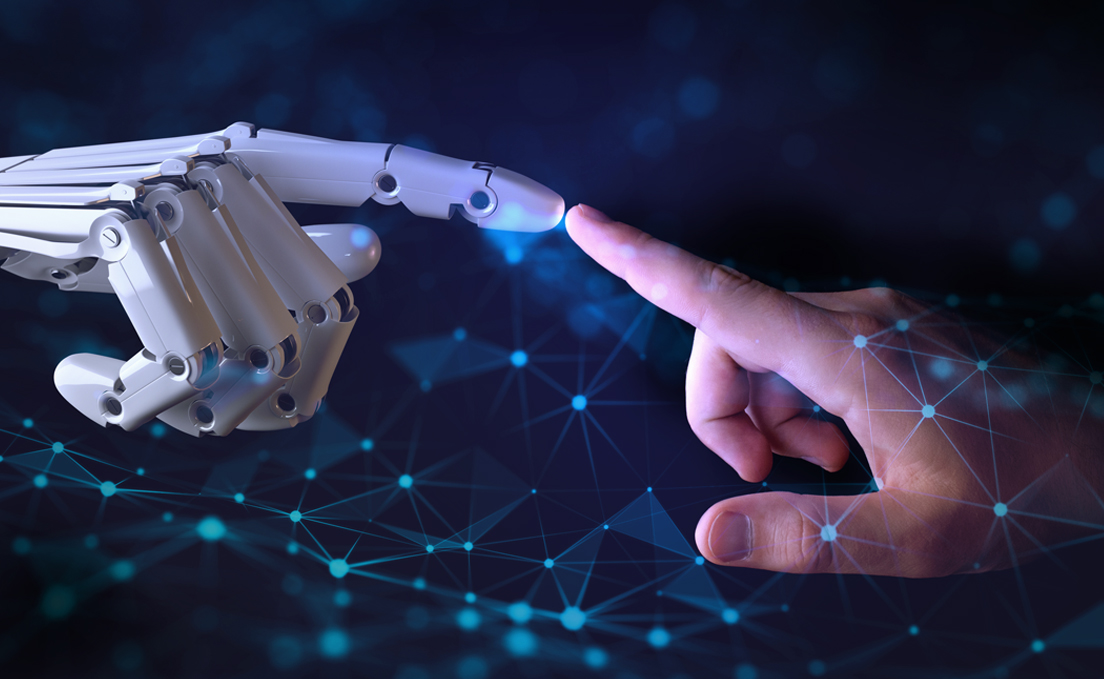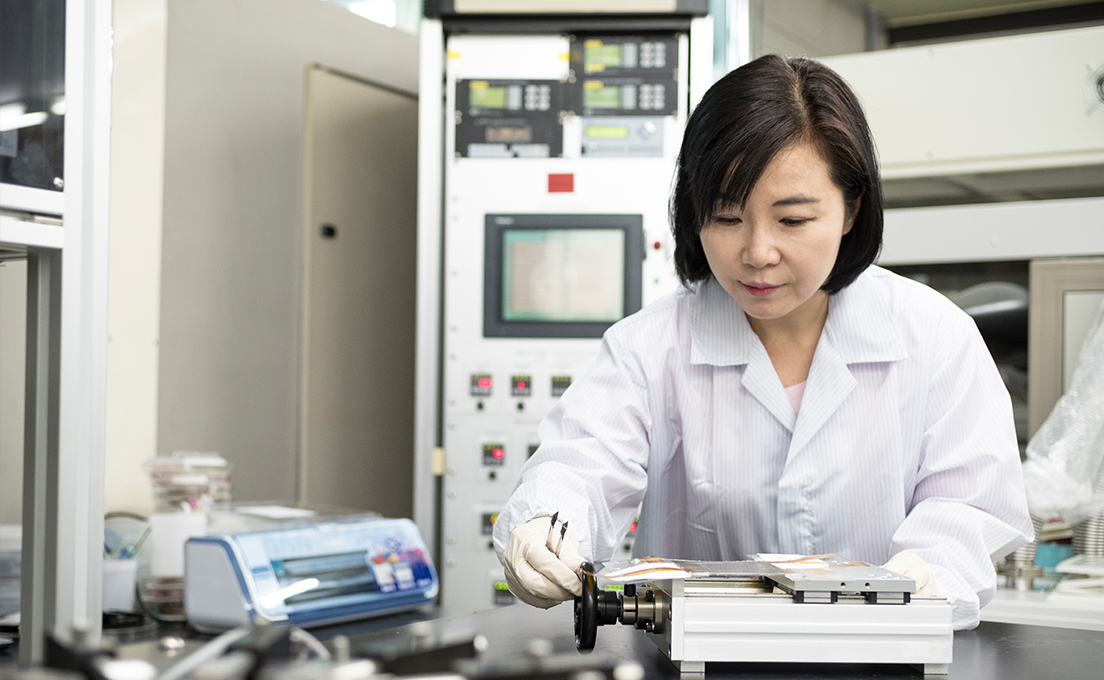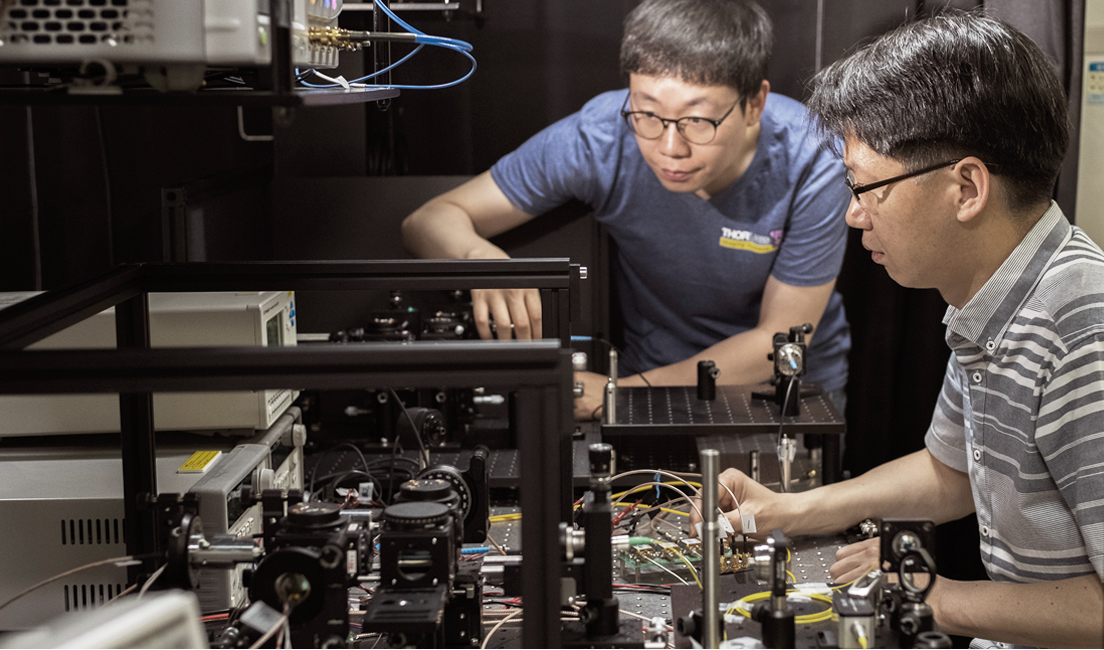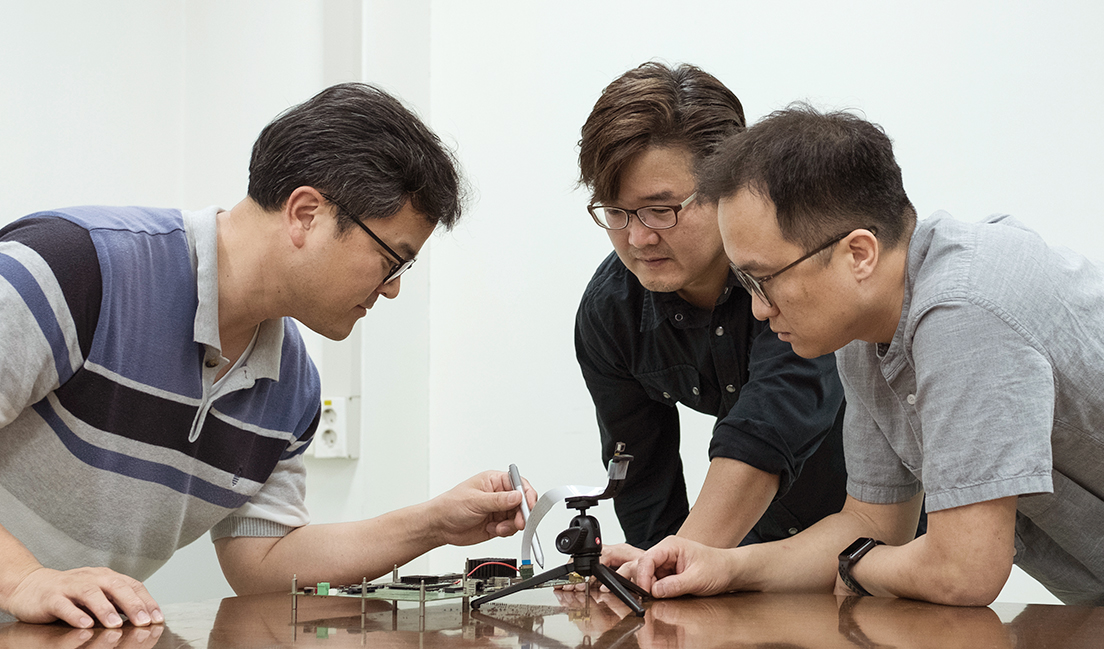

The ICT Materials and Components Research Laboratory is the only laboratory in ETRI that is dedicated to researching materials and components rather than an entire system and is proactively taking on materials and components research, a challenging arena for corporations, to lay the ground for turning commercialization efforts into tangible outcomes. Our laboratory is making ceaseless efforts to develop cutting-edge materials and components so that we can lead the way as a global leader in the era of the Fourth Industrial Revolution, thereby boosting the national pride of the general public.
01
Electronic Skin Reacting in the Same Way as Human Skin

ETRI’s technology development efforts are exemplified best by skintronics. This technology aims to build an electronic skin using an electronic device that is as thin and flexible as human skin, thereby making the virtual sense of touch feel more realistic. As a future version of VR gloves that are currently available, the technology will provide ultra-realistic electronic skin services capable of allowing people to feel the virtual sense of touch. If it becomes possible to transplant this electronic skin to a robot, humanoid robot services will be actualized in real life.
It should be noted that this technology is expected to evolve into a platform technology, and will be applied in various fields and industries, such as skintronics health monitoring, healthcare systems fitted with rehabilitation services, and structure safety monitoring systems.
02
Beam of Laser Light Brightly Shed on Fourth Industrial Revolution
Hologram component technology, which our laboratory is actively developing, is also expected to lead the global market going forward. Hologram technology provides visual effects that make a viewer feel as if a virtual object actually exists, and is one of the technologies under development by the Reality Device Research Division.
Our laboratory is now pushing forward the development of a Spatial Light Modulator (SLM), a panel essential to building hologram images. The core technology underpinning the digital hologram SLM is a UHD panel technology where its unit pixel is as small as the wavelength of light. ETRI researchers are aiming to develop an SML with a pixel size of 1 µm on a glass substrate that is used for displays by jointly using semiconductor technology suitable for refinement applications and display technology suitable for large-area applications. ETRI has successfully achieved hologram images with a pixel size of 3 µm. This achievement holds significance in that UHD hologram images have been actualized by reducing the pixel size to the level of 1/4 of existing pixels.
03
ICT Solution Predicting Algal Bloom Before It Occurs


The ICT Materials and Components Research Laboratory is also leading the way in the development of basic materials and components intended for addressing social issues. For example, the issue of algal blooms is emerging as a serious environmental threat, especially in the summer season, and its seriousness can be easily felt with the emergence of a newly coined term, green algae latte. ETRI is now joining hands in efforts to address these algal bloom issues. In the past, algae sampling was conducted by our staff members, and the analysis process took two weeks. Now, ETRI’s solution provides real-time integrated management services based on sensor networks and AI technology. Notably, the solution will allow us to predict algal blooms before it occurs so that protection measures can be implemented immediately. ETRI’s technology and know-how as such will contribute to global efforts to promote environmental conservation.
04
Ultimate Lock Free from Hacking Risks

With the rise of the Fourth Industrial Revolution, where everything is connected, people can now enjoy more convenient and prosperous lives. You can purchase things with a single fingerprint scan, and autonomous vehicles will help you commute. However, it should be noted that technological development always comes with potential risks.
ETRI researchers have been making advances in wireless quantum cryptography network communications, which will help make our society free from hacking concerns. Quantum cryptography network communications technology is characterized by its unique ability to change data information in case of hacking attacks. Therefore, this communications technology is secure against hacking and wiretapping. ETRI’s next-generation cryptography network communications technology will ensure that full protection is provided to all our information and circulated and shared in a ubiquitous manner.
05
Eyes of AI, Visual Intelligence Semiconductor

The ICT Materials and Components Research Laboratory is looking ahead even further to next steps. A case in point is its attempt to actualize neuromorphic components intended to emulate the human brain using a computer. Our researchers have already developed a microprocessor chip equipped with human-level visual intelligence. This processor chip will be fitted in autonomous vehicles, which will be commercialized in the future, providing the vehicles with visual intelligence. This fingernail-sized semiconductor chip, equipped with nine brains, is capable of learning and recognizing objects via its cognitive processor resembling the human neural network. This means the actualization of KITT, an AI car from the adventure TV series Knight Rider in the 1980s, capable of driving itself while detouring around obstacles here and there to chase suspects.
Eum Nak Woong, Director of the ICT Materials and Components Research Laboratory, is confident that the laboratory will continue to give rise to outstanding research outcomes that can strike a chord with the general public going forward. He said, “Our laboratory aims to make significant contributions to the advances of the Fourth Industrial Revolution by developing cutting-edge ICT materials and components. To that end, we will continue to solidify the foundation of our laboratory advancing toward hyper-connectivity, hyper-intelligence, and hyper-reality, and make sure to pave the way for Korea to proactively respond to changes brought about by the Fourth Industrial Revolution.”










